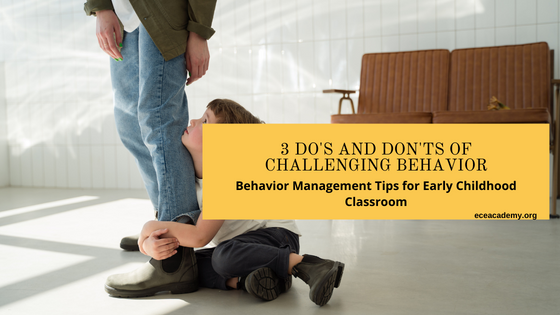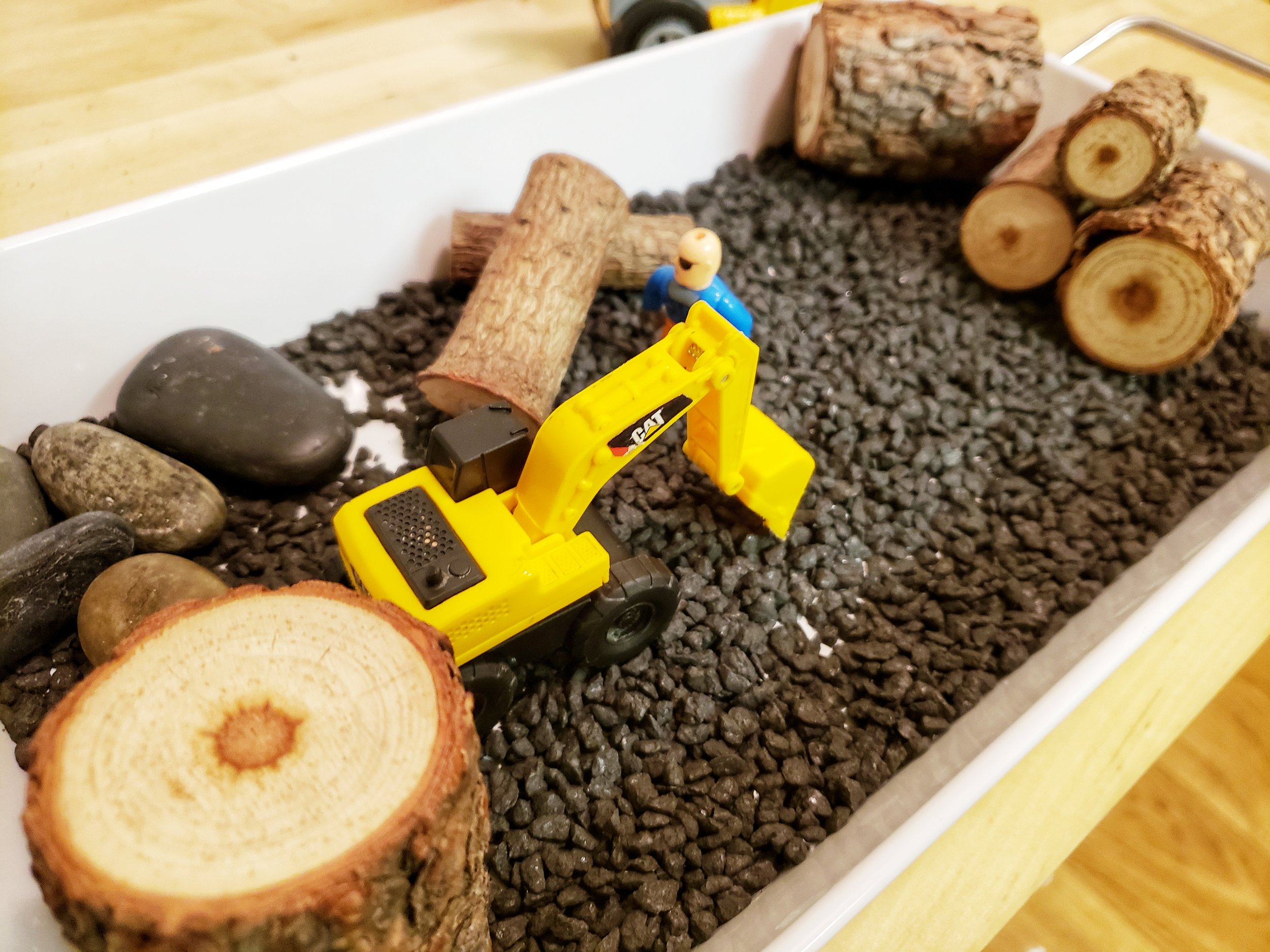3 Things To Do (and not do) When Dealing With Challenging Behavior
Guiding kids on how to identify, regulate, and safely express their emotions, and other social/emotional skills are crucial and should be the focus of teaching in the PreK and Daycare classrooms.
And with little minds trying to process big emotions it's inevitable that we’ll come across a child who’s having a harder time with this than his or her peers and we as teachers have to navigate our way through various behavior issues.
Some of them can be as simple as a child refusing to line up for outside time or as concerning as aggressive behavior and harming themselves and/or their peers.
Helping a child through this time can feel daunting and stressful.
There are many moments where it can feel tempting to call it quits and send the child on their way to someone, anyone else, but with the rise of preschool expulsions, many of these “problem children” get bounced between a number of schools, making their behavior worse.
As the quote says “the children who need love the most will ask for it in the most unloving ways”.
The children that are requiring the most energy from us are often the ones that need our attention, our patience, and our determination the most.
That, however, doesn't remove the fact that these challenging behavior issues put an enormous strain on our mental and physical resources.
Having an understanding of these actions as well as a plan of action can dramatically reduce the overwhelm and put the control back in your hands as an educator instead of being at the mercy of a young child's executive functioning skills.
Here are 3 Dos and Don'ts of managing difficult and challenging behavior in the classroom.
The 3 Do’s:
DO bring up your concerns to relevant guardians in the child's life. This means getting parents or caretakers together for a meeting to discuss the child's behavior, making sure you and your assistant or co-teacher are on the same page about what you've observed and how you plan on managing their behavior, and asking your director for any support, advice, training or resources they might have on hand.
It's important that this becomes a supportive team effort and not a solo mission which can easily lead to teacher burnout.
DO show empathy and love. While it's true challenging behavior requires a firm response, that doesn't mean we have to withhold affection and empathy.
It's okay to offer a hug or one-on-one time in appropriate situations. Validate their emotions and frustrations, show them you care. This is actually a key part in overcoming challenging behavior.
DO be proactive. Make detailed observations and try preventative measures as often as possible. Use your observations to pinpoint the child's triggers and avert any negative behavior you can predict.
For example: if you know transitioning from free play to lunch sparks a meltdown, try giving them an individual 5-minute warning and visual countdown.
It also helps to be proactive with discipline techniques in cases when you can't prevent challenging behavior.
The 3 Don’ts:
DON’T assume the why. It's easy to just chalk up certain behavior to poor parenting, technology, sugar, or some other type of scapegoat. However, when we begin to assume the cause of the behavior without really looking into the situation, we cloud our perspective on the potential real reasons and thus, prevent ourselves from coming up with lasting solutions that can help the child.
Challenging behavior often requires a fair amount of detective work to get to the root of the issue and requires even more patience during the trial-and-error process.
DON’T make empty threats. Children are perceptive and catch on quickly to a lack of consistency and lack of follow-through.
It's tempting to say something dramatic or something that you know will elicit a response like you'll call mom or dad if they keep misbehaving but the chances of them eventually calling your bluff are high. If it's something you can't follow through on, it's best to look for a different solution.
DON’T get sucked into the battle. Ever caught yourself negotiating with a child? One minute you’re explaining to them why they can't do something and ten minutes later you realize you’ve somehow been dragged into a back-and-forth debate that's going in circles.
Or you’ve spent the last few minutes lecturing and trying to get them to understand why their behavior was wrong.
When children are dysregulated enough to act out they’re also too dysregulated to hear reason.
They need someone to be their stability. It's important to stay in control of the situation and avoid a power struggle.
This can sneak up on us! You might even find yourself going back and forth with a child about no longer going back and forth, repeating things like “That's enough” or “I'm done discussing this” over and over.
A good rule of thumb? If you've said the same or similar phrase more than 3 times in a short period of time you might be feeding into a power struggle.
Likewise, being mindful of accidentally internalizing their behavior and/or sharing their emotional state.
Just because the child is upset and frustrated does not mean you have to be as well. You can empathize and help them work through big emotions without sharing them.
The biggest thing to remember about challenging behavior is that it's an ongoing process.
There isn't an overnight solution (and if you know one please share it!) and it's going to take some trial runs, testing, and patience to sometimes see even the smallest results. When thinking of solutions you need to think long-term.
Short-term solutions that temporarily provide a band-aid fix to a much deeper issue can be helpful to relieve stress for all parties involved until a better strategy is implemented. But we should always have long-term solutions as the goal or we increase the risk of the child regressing and ultimately do the child a disservice.
If you enjoyed this share it with other teachers!
Further reading: Help! They’re destroying the classroom.











Aggressive behavior like hitting, kicking, and biting are easily cited as one of the most stressful behaviors in the early childhood classroom. Here are some tips for handling aggressive behavior in the PreK/daycare classroom.